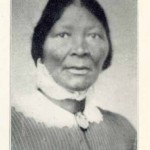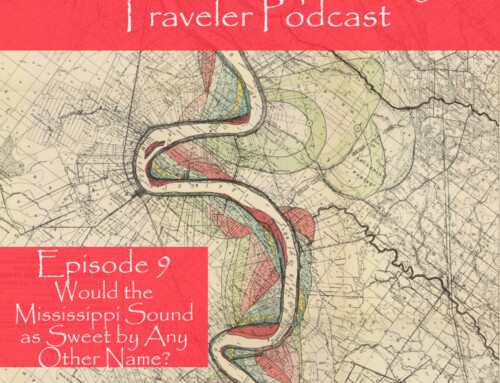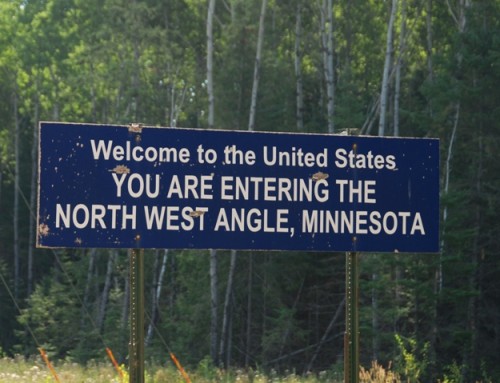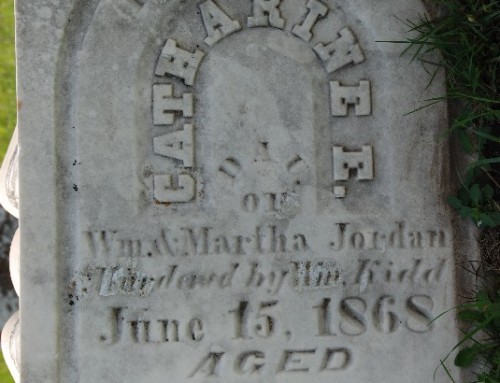About 70 miles north of Hannibal, Missouri, the Mississippi floodplain is bisected by a five-mile wide valley carved by the Des Moines River. South of the river is the State of Missouri; north is Iowa. It’s a scenic area but not especially remarkable. The Missouri side has a couple of fireworks super stores, while the Iowa side has, well, farms. Before the Civil War, though, crossing the river was a much bigger deal, especially if you were black, for the Des Moines River marked the boundary between freedom and slavery.
At the confluence of the two rivers, on the free side of the border, the city of Keokuk, Iowa, was built on a high bluff above the rivers. Perhaps because of its location as the first free city on the west bank of the Mississippi, Keokuk attracted a significant number of black residents before the Civil War, a community that grew through the late 19th century. After the Civil War, many blacks, mostly formerly enslaved people, were on the move looking for new opportunities away from their former masters. Some traveled up the Mississippi River and settled in river towns, at least for a while. For the most part, though, those early black migrants were making a pit stop on the way further west. Not in Keokuk, though, where a significant number stayed and built a community.
**Keokuk is covered in Road Tripping Along the Great River Road, Vol. 1. Click the link above for more. Disclosure: This website may be compensated for linking to other sites or for sales of products we link to.
Among the first African Americans to settle in Keokuk was Charlotta Gordon Pyles. Charlotta and her twelve children were owned by Hugh and Sarah Gordon of Bardstown, Kentucky. When Hugh died in 1834, he left Charlotta and some of her children to his only daughter, Frances, with the expectation that she would give them their freedom.
Charlotta was married to Harry Pyles—as much as any enslaved person could have been married, anyway—a man who, though free himself, was powerless to prevent his wife and children from being sold to another owner. Under the laws of the day, the children’s legal status was the same as the mother’s, so the Pyles’ children were all born enslaved. In spite of the unambiguous wishes of their father, Frances Gordon’s siblings were not of the same mind about freeing the Pyles family.
In 1853 Frances’ brothers, William and the Reverand Joel Gordon (a Baptist minister) kidnapped one of Charlotta’s sons, Benjamin, and took him to Mississippi where he was sold to William P. Moore, who then took Benjamin to Missouri to work in hemp fields. This act convinced Frances that she would have to leave Kentucky and head north in order to free Charlotta and her children. When the brothers learned of her plans, Joel sued Frances, claiming that she was no longer competent to manage her own affairs. Frances stood firm, though, and argued in a Kentucky court that as a slave owner she was allowed to move her enslaved workers wherever she pleased. She won the case.
A month after losing their suit, Joe and William (and a few other relatives) sued Frances again. This time the sheriff arrested the Pyles family and hauled them to jail on a rainy fall night. Frances followed them but it took her two days to get them released; piling on the insult, the sheriff billed her $51.35 for the costs of incarceration. The case against Frances was thrown out in March 1854 but she and the Pyles family were long gone by then; they left Kentucky shortly after the Pyles family was released from jail.
Fearing that her brothers might try to kidnap other members of the Pyles family, Frances, then 80 years old, loaded the family—Harry, Charlotta, 11 of her 12 children, and 5 grandchildren—and all their supplies into a prairie schooner. They traveled to Louisville across the hills of central Kentucky where they boarded a steamboat and traveled up the Ohio River to Cincinnati to meet the Reverend Claycomb, a friend who had agreed to accompany the group en route to Minnesota.
After leaving Cincinnati, they returned down the Ohio River, then up the Mississippi to St. Louis. The route through Missouri, a slave state, was fraught and unfamiliar, so they paid $100 (nearly $3,000 in 2013 dollars) to hire Nat Stone to guide them from St. Louis across the terrain. After they were well on their way, Stone decided that his services were worth more than his initial quote, so he asked for another $50; in return for the extra money, he promised that he wouldn’t turn the family over to slave traders in Missouri. By the time they crossed the Des Moines River into Iowa, winter was settling in, making travel more difficult. They decided to settle in Keokuk, which, in 1853, had transitioned from a lawless frontier town to a growing Mississippi River port with 3,000 residents. Two years after the Pyles family arrived, Orion Clemens and his brother Samuel would set up a print shop in downtown Keokuk.
Frances continued to live with the Pyles family (and worship at the same church, the First Baptist Church), and the whole group struggled mightily as they tried to settle in to their new home. Charlotta came up with a big plan to give the family a boost. Two sons-in-law were still enslaved in the South; if they were to join the family and find work, the family just might make it. Charlotta contacted their owners and learned that she could purchase their freedom for $1,500 each, an enormous amount of money at that time (equivalent to nearly $40,000 today, according to one inflation calculator I found).
Charlotta’s kidnapped son, Benjamin, had somehow heard of his mother’s plan and wrote to her asking that she purchase his freedom instead of one of the brothers-in-law. Faced with a terrible choice, Charlotta wrote back to him, turning him down. She needed the two sons-in-law out of slavery to help support their families; Benjamin was still single, and she thought he might have a chance to run away. Benjamin was apparently not pleased with the answer. Charlotta soon lost touch with him, and the family never heard from him again.
In the meantime, Charlotta embarked on a speaking tour around the East Coast to raise the needed $3,000. In churches, private homes, and public halls like Independence Hall in Philadelphia she preached about the evils of slavery. Along the way, she befriended Susan B. Anthony and Frederick Douglass (who delivered a speech in Keokuk at the Chatham Square Church a few years later). Charlotta succeeded. In six months she raised the $3,000 and bought freedom for the two men; not bad for a woman with a limited education. Charlotta and Harry were finally legally married on April 2, 1857, in Keokuk, and, with most of the family back together and their finances more stable, Charlotta offered her home as shelter to enslaved blacks escaping on the Underground Railroad to Canada.
Although the family made a home in Keokuk, racial segregation was still the norm in the 19th century and Keokuk was no different. It was especially hard to find a good school for a black child. The first school for blacks in Keokuk was built in 1869 (at 11th and Main), but it was meant to serve as a primary school. When Charlotta’s daughter, Charlotta Smith, tried to enroll her son, Geroid, in the all-white public high school, school officials refused to admit him. Charlotta and other black families filed a lawsuit against the school and, in 1875, the Iowa Supreme Court ruled in their favor, ordering all the state’s schools integrated. School officials in Keokuk didn’t fight the decision, and began enrolling black students in 1876—a remarkable 78 years before Brown v. Board of Education did the same thing for the US as a whole. Geroid Smith, the son and grandson of former slaves, was one of the first black students to graduate from the integrated high school when he was awarded his diploma in 1880.
© Dean Klinkenberg, 2013
Community-supported writing
If you like the content at the Mississippi Valley Traveler, please consider showing your support by making a one-time contribution or by subscribing through Patreon. Book sales don’t fully cover my costs, and I don’t have deep corporate pockets bankrolling my work. I’m a freelance writer bringing you stories about life along the Mississippi River. I need your help to keep this going. Every dollar you contribute makes it possible for me to continue sharing stories about America’s Greatest River!







Frances was my 5th great aunt and the Rev. Joel Gordon my 5th great grandfather . another family torn apart by slavery,